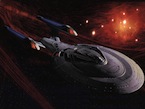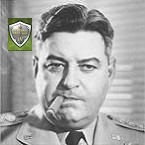ncc1701e wrote: Sun Apr 07, 2024 8:44 am
Thanks for all your answers, helpful. But I am still puzzled.
Different designers (James F. Dunigan, John M. Astell, Frank Chadwick all from the board wargaming era) and scenario creators (just from the TOAW archives) and publishing companies (Avalon Hill, GDW, SPI, and MMP all board wargaming companies) have tried to take their own spin on the Eastern Front.
Essentially it depends on what the designer is trying to say with his game recreation.
There are basically three flavors to try to design; Strategic, Operational, and Tactical.
The following is taken from the Introduction to
War Gaming by SPI :
scale. Literally, the number of miles or kilometers represented by the width of a single hex on the game map. More loosely, a game will be characterized as being a certain scale depending upon the size of the military origination represented by a single playing piece. In this sense there are three main scales:
Tactical. Single man, ship, vehicle or aircraft. Also team, squad, platoon, or company sized units.
Operational. Battalion through division sized units.
Strategic. Division through Army and Army Group size units.
Sometimes the above scales may be modified by the adjectives "low", "high", or "grand" to indicate a scale at one of the extremes of the basic category.
Introduction to War Gaming, SPI 1977, page 17
Here is my own take and analysis:
From my board war game days:
Tactical Level War games are primarily designed around small unit tactics. Mostly at the squad and up to battalion level, but some are single man games (a bit rarely in board war games, but common in FPS), but most war games are squad up to battalion level games at the tactical level. The idea is that the tactics fall on the battalion, company, platoon or squad leader and they are implementing a smaller part of one of the operations.
Map scale: 5-250 meters per hex (man to man 5-25 meters, squad 25-75 meters, company 75-250 and battalion 100-250 or up 500 meters)
Time scale: 30 seconds to 1 day per turn (usually for man to man you'd see 30 seconds to a few minutes, most squad level games are 1 minute to 5 minutes, most platoon level games are 30 to 60 minutes, most company level games are 1 hour to 8 hours, most battalion level games are 2 hours to a day per turn)
Unit/Counter scale: 1 man up to battalion per counter/unit (so 1 man, a squad (8-15 men) platoon (20-50 men), company (100-180 men) battalion 200 on up)
Operational Level War games are primarily designed the operational level of movement, combat, logistics and other operational aspects (too numerous to list). Generally Operational level war games are battalion up to division level. The general or most common are divisional level war games. The idea is that operational level war games are implementing the grand strategies set my High Command or Political leaders.
Map scale: 1 km to 50 km per hex (regiment/battalion level 1 km to 5 km, brigade/regimental 1-10 km, divisional/regimental/brigade level 15-30 km, divisional/army level 25-50 kms).
Time scale: 4 hours up to biweekly turns (regiment/battalion 4 to 24 hours, brigade/regimental 1 day to 1 week, divisional/army 1/2 week to 2 weeks)
Unit/Counter scale: battalion up to divisions per counter/unit (each counter could represent a battalion, regiment, brigade, division, corps, or armies, with multiple counters for each regiment, brigade or division and/or pure regiments/brigade/divisions)
Strategic Level War games are primarily designed for the strategic level of command, sometimes involving production, politics, where and how to employ those strategies.
Map scale: 20-100 km per hex
Time scale: 1 week to seasonal turns
Unit/Counter scale: Divisional up to Army Group level per counter/unit
These are generic concepts that have been around since 1958 when Avalon Hill first introduced the first board war game called Tactics II, and evolved when SPI came into being in the late 1960s while being led by John F. Dunnigan one of founding fathers and most prolific war game creator/inventor.







